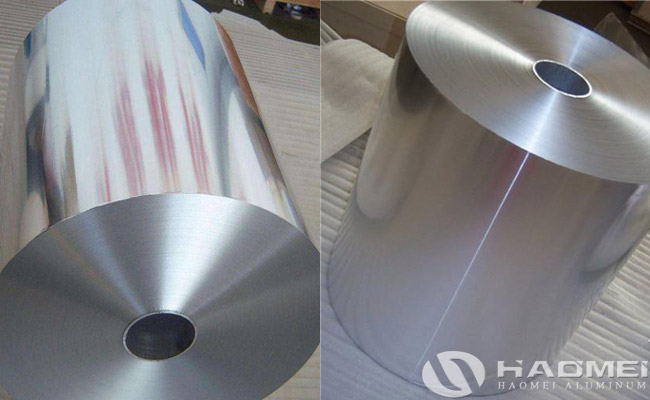Aluminum foil for electrolytic capacitor 1070, 1100, 3003 and 8011 is the main material of aluminum electrolytic capacitors. The aluminum foil is set as the anode. After electricity is energized in the electrolyte, an oxide film (Al2O3) will be formed on the surface of the aluminum foil. This oxygen film functions as a dielectric. The effect of etching is to enlarge the surface area of the aluminum foil. Etching is an electrochemical process in which alternating or direct current is applied to a chloride solution.

Formation is the process of forming a dielectric layer (Al2O3) on the surface of the anode aluminum foil for electrolytic capacitor. Generally, the formed aluminum foil is used as an anode. In order to expand the surface area, the aluminum foil material is placed in an aqueous chloride solution for electrochemical etching. Then, after applying a voltage higher than the rated voltage in the ammonium borate solution, a dielectric oxide layer (Al2O3) is formed on the surface of the aluminum foil. This dielectric layer is a very thin and dense oxide film, about 1~1.5nm/vot, insulation resistance It is approximately 108 to 109Ω/m. The thickness of the oxide layer is proportional to the withstand voltage. In order to increase the efficiency of expanding the surface area, the etching shape is different according to the rated voltage.
The main raw materials of aluminum electrolytic capacitors: anode aluminum foil for electrolytic capacitor, cathode aluminum foil for capacitor, electrolytic paper, electrolyte, guide foil, tape, cover plate, aluminum shell, washer, sleeve, gasket, etc. Aluminum electrolytic capacitor production process: aluminum foil, forming, cutting, assembly, winding, impregnation, sealing, aging, measurement, packaging, inspection, etc.
For Price Plz Contact Whatsapp/Wechat: 0086 181 3788 9531
Or Email to nydia@aluminumhm.com